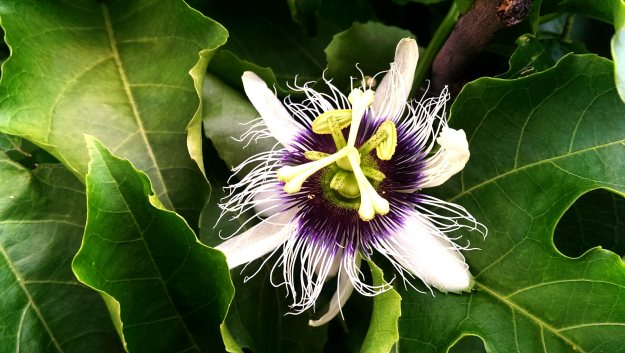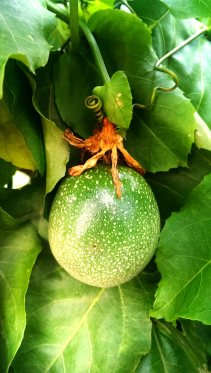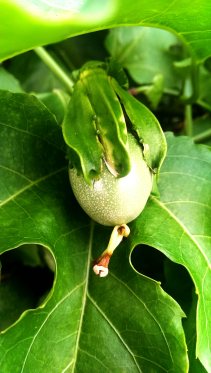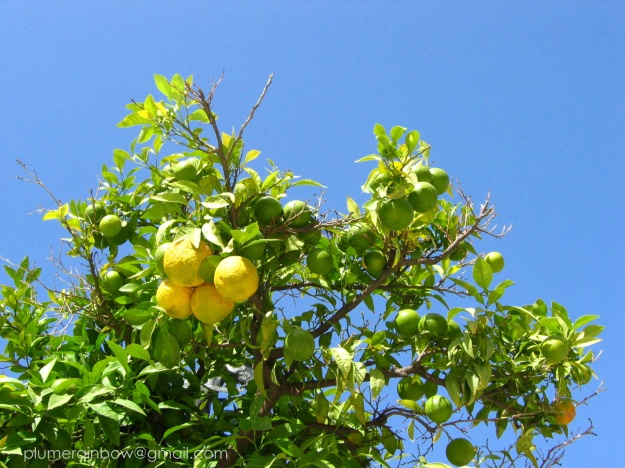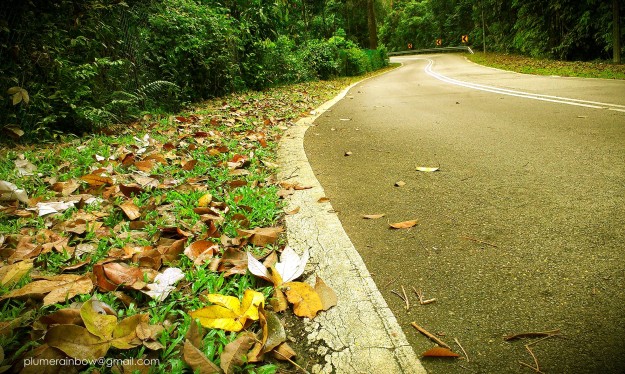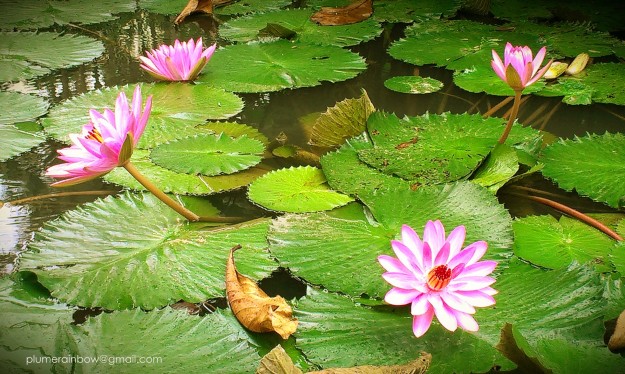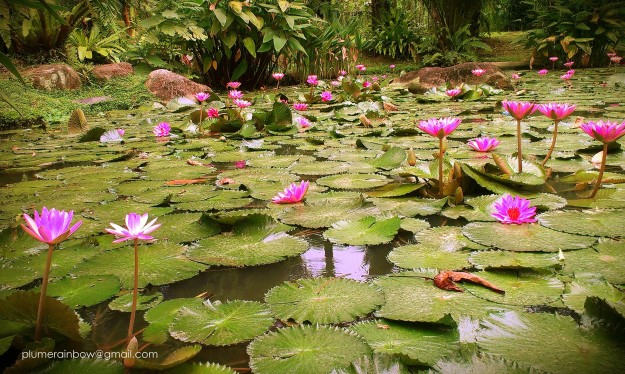The long tail boat docked firmly against the mud-caked bank of Inle Lake. We climbed out of the boat and scrambled along the mud bank to Taung Tho where the tribal market is already right in the thick of things. Bullock carts and resting bulls linger on a spacious patch, while the owners busily tend to their stalls of vegetables, spices and other wares. A lady sits in between two stalls selling gorgeous home made Shan tofu. Immediately, last night’s meal comprising a simple yet delicious Shan tofu salad comes to mind. We sat down at a stall and tucked into a bowl of warm noodles – meeshay – splashed with chilli oil, vinegar-based sauce mix, coriander and a generous pinch of salt. After that meal, I had to learn how to say “salt, a little” in Burmese. But still, we wiped our mouths happily with a smile.
In Myanmar, mohinga seems to be a common breakfast food. It’s a soup-based vermicelli dish eaten with chickpea fritters. The dish is a combination of earthy fish broth, tangy lemongrass, mild spices, ginger and lime added to one’s taste.

Sitting on the border of India – and once ruled as part of the Indian empire during British colonial days – Myanmar’s population consists of quite a number of people of mixed or Indian descent. Chappati, thosai/dosa, parata and briyani also feature quite a fair bit amongst Burmese street eats. Absolutely delicious. In the rising temperatures of early March, we slurp on copious amounts of banana lassi, avocado shake and fruit juice. Burmese cuisine is also very influenced by Chinese and Thai cuisine.
Another typical Myanmar meal is curry-based mains with rice and side dishes which usually come for free. The curries are generally milder. Another common thing found on restaurant tables is the pickled tea leaves ( lahpet) and fried beans combo which is apparently a national favourite. It can be eaten as an appetizer or as a complement to the main meal.


And fruit lovers will get plenty of chances to gorge on the abundance of mangosteens, avocados, watermelons, grapes, mangoes (although not quite in season when we went). In Yangon, the sight of heaps of giant avocados spilling on to the streets sent me into a trance.
One of the greatest joys of travelling is the opportunity to enjoy food. Adventures of the palate rival thrilling rides across spectacular landscapes. More than that, feasting is a far more sensory and raw experience. Two strangers who eat and enjoy the same cuisine share an inexplicable bond of the palate that transcends class, status, origins and language barriers. What do you think?
-

-
Curry-based mains complemented by salad
-

-
Fried beans & lahpet
-

-
Dough fritters, not unlike ‘yao zhar kuai’ or ‘you tiao’
-

-
Pa’o ladies dropping by for breakfast after their morning shopping
-

-
The familiar sight of ‘muruku’! a la Burmese style.
-

-
Delicious shan tofu salad
-

-
Jaggery, a traditional sweet snack eaten after meals. Tastes like gula melaka.
-
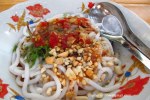
-
Yummy noodles for breakfast
-

-
A familiar cup of milk tea in the morning. Not unlike the ‘teh’ in Singapore & Malaysia
-

-
Yam-based doughnut fritters
-

-
Guacamole and poppadom
-

-
Field mint juice and vegetable briyani
-

-
Street eats line the bus terminal
-

-
Gorgeous steamed corn
-

-
Heaps of avocados, spilling onto the streets
-
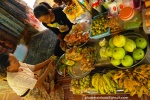
-
Fruits, some pickled, some just very raw
-

-
Lahpet, which are fermented tea leaves.
-

-
fried beans, to be eaten with the fermented tea leaves
-

-
Mobile street hawker dishing out meals
-

-
It’s been a while since I had home-made ‘Bao’.
-

-
Chinese-style tea house, serving ‘bao’, dim sum and tea.
-

-
Chicken Briyani
-

-
Gorgeous fruits are in abundance
-

-
Street hawker of steamed corn
-

-
Burmese rice crackers
-
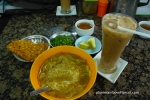
-
Mohinga, often eaten for breakfast.
